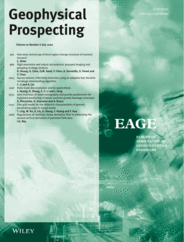
Full text loading...
 , Henglei Zhang2, Chun‐Feng Li1,3, Jie Feng4,5
, Henglei Zhang2, Chun‐Feng Li1,3, Jie Feng4,5
Euler deconvolution of potential field data is widely applied to obtain the location of concealed sources automatically. A lot of improvements have been proposed to eliminate the dependence of Euler deconvolution on the structural index that are based on the use of high‐order derivatives of the potential field and, therefore, sensitive to data noise. We describe the elimination of the dependence on the Ratio‐Euler method, which is based on the original Euler deconvolution function. The proposed method does not involve high‐order derivatives. Testing on simulated and field data indicates that the proposed method has better noise resistance than the existing Tilt‐Euler method, which is based on high‐order derivatives. The proposed method is first applied to the ground magnetic data from Weigang iron deposit, Eastern China. It reveals that the ore body could be approximated by a horizontal prism with a considerable vertical extent with a top depth of 55 m, which are very close to the information obtained from drill holes. In addition, the proposed method works well in estimating the depth to a cavity centre from the ground gravity anomaly.

Article metrics loading...

Full text loading...
References


Data & Media loading...

